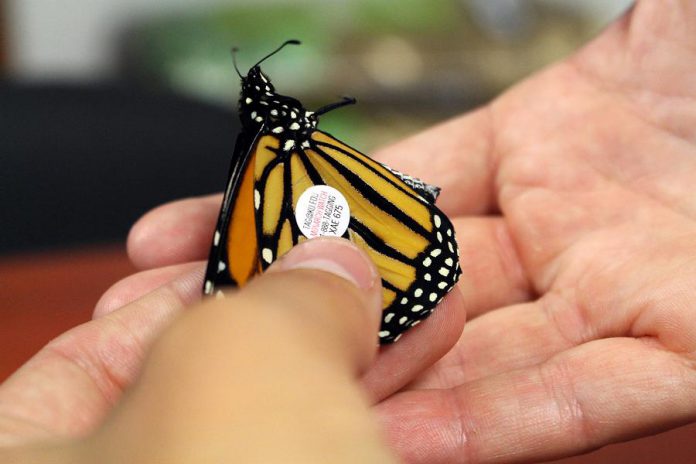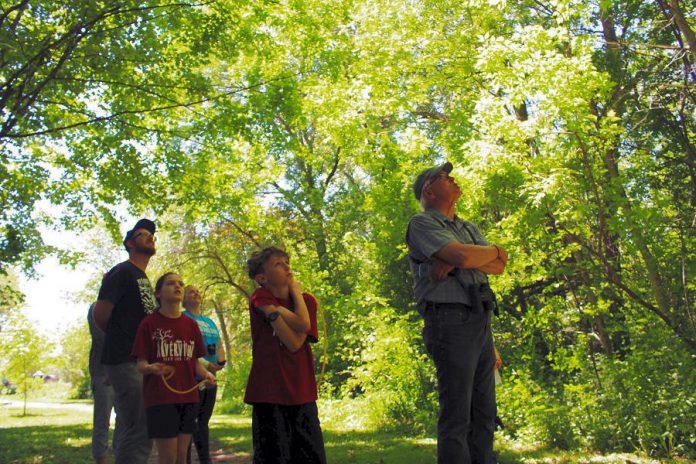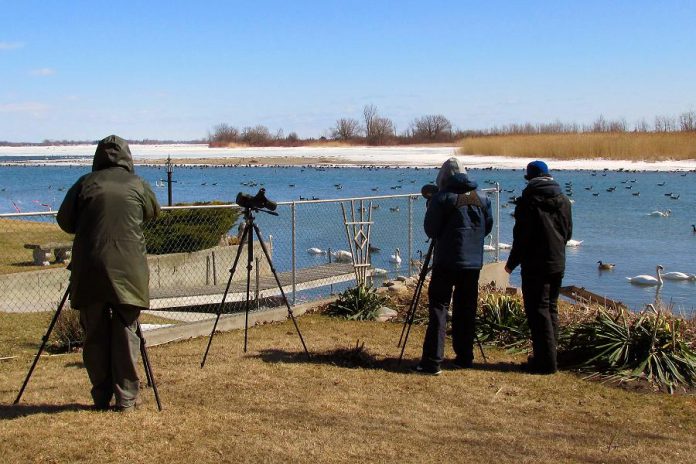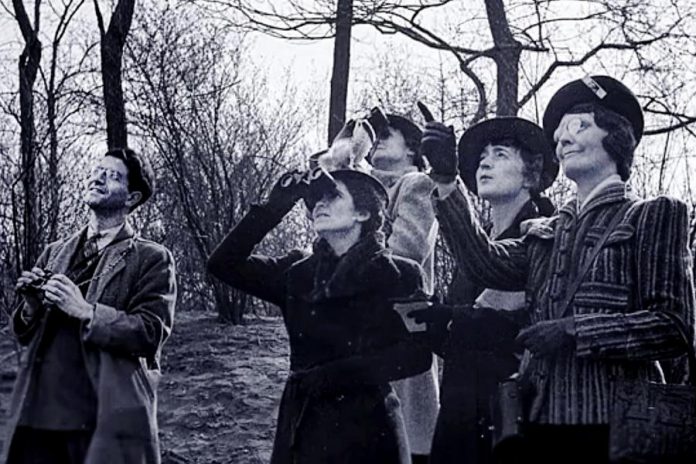
Most people get excited about an unexpected wildlife sighting. Whether it is the surprise of seeing a white-tailed deer while driving down a country road, or the excitement of finding a salamander after hours of turning over logs, it’s a thrill that most of us can relate to.
You may not consider yourself to be a scientist, but citizens like you all over the world are taking their excitement for wildlife viewings to the next level by getting involved with citizen science projects.
From earthworms to bats, citizen science projects collect data from your wildlife sightings to track changes in populations and gather information about various different species and habitats. Citizen science allows anyone and everyone to get involved with real-life science projects.
Monarch rearing and tagging

For many years now, GreenUP has been engaging the community in various citizen science projects including our annual Monarch rearing and tagging events. Each year, we collect Monarch caterpillars, carefully feed them, and monitor their health as they make the remarkable transition from larva, to chrysalis, to adult butterfly.
The Monarchs are then tagged and released as part of the larger North American citizen science project Monarch Watch (monarchwatch.org), a network of students, teachers, volunteers, and researchers dedicated to the study of the Monarch butterfly.
Tagged butterflies are tracked via their tags, in order to study and seek to understand each adult butterfly’s long migration from start to finish.

“There is so much magic and mystery to this incredible process of transformation,” says Karen O’Krafka of the Pathway to Stewardship & Kinship project (pathwayproject.ca).
“This year, we brought Monarchs into eleven Pathway Project pilot classrooms to help foster the awe and empathy that comes from positive interactions with animals, while mapping their marathon migration to Mexico. Five of these tiny insects were tagged with their identification numbers submitted to Monarch Watch, drawing awareness to the unique needs of Monarchs and the threats to their local habitat and migratory path.”
BioBlitz For Biodiversity

This past summer, GreenUP Ecology Park also hosted BioBlitz For Biodiversity, in partnership with the Peterborough Field Naturalists (PFN) and Biodiversity Education and Awareness Network.
Community members joined together to record all of their nature sightings in Ecology Park over the span of one day. Participants logged three species of worms, birds such as American Redstarts and Catbirds, Big Brown Bats, Wool Carder Bees, and the Hummingbird Clearwing Moth, to name a few.
The Ecology Park Bioblitz allowed attendees to view many diverse types of animals that exist right here in the City of Peterborough and be part of a larger initiative to track biodiversity.
Christmas Bird Count
Want to get involved in North America’s longest-running citizen science project?
Started in 1900, the Christmas Bird Count (CBC) (www.birdscanada.org/volunteer/cbc/) is set to commence for its 67th year in Peterborough on December 16th, 2018.
This is an annual event that sees thousands of bird watchers across the continent lace up their hiking boots, strap on their binoculars, and set out to count and list every bird seen in over 2,000 locales in the Western Hemisphere.

“Data from annual Christmas Bird Counts has been instrumental in tracking long range trends,” explains PFN member and CBC Compiler Martin Parker. “For example, in the 1950s, bird count results revealed a decline of birds of prey, which was the first warning sign of the impacts of DDT use.”
In our area, historic Peterborough CBCs show that Black-backed and American Three-toed Woodpeckers frequented this area during the 60’s, but have not been seen in more recent CBC tallies.
“We know now that these boreal species travelled south to Peterborough to take advantage of so many insects available for eating from the Elm trees dying from Dutch Elm Disease,” Parker explains. “And we are seeing a similar trend now in the Ottawa-area with the impacts of the Emerald Ash Borer.”

Community and volunteer involvement in citizen science projects like the CBC is a key component of monitoring the status and health of the natural environment, all around the world — you can get involved!
To join the Peterborough Christmas Bird Count on December 16th or the PFN Bird Count for Kids event on December 30th, register with PFN by contacting Martin Parker at 705-745-4750 or by e-mail at mparker19@cogeco.ca.
If you would rather participate in the CBC from home, you can register your backyard bird feeders and submit your sightings right from the comfort of your living room window.
Citizen science on the go
If you’re out watching birds, or looking for salamanders, frogs, turtles, or happen to spot a unique species and would like to share your sightings, consider downloading one of many mobile apps that will connect you with large networks of citizen science projects throughout the world.
For example, the aspiring or the pro birder, may want to download the iBird mobile app (ibird.com). It’s a great tool that can help you search and identify birds by shape, colour, location, or habitat. It includes illustrations and photographs of birds, their songs, range maps, and migration routes.
iNaturalist (inaturalist.org) is another great mobile app that connects your nature sightings and locations with biologists, naturalists, and other citizen scientists to understand biodiversity across the globe.
“Many of Peterborough’s passionate ecologists and biologists, along with novice naturalists and nature nuts have embraced this app and are documenting and identifying local biodiversity in local wild spaces and their own backyards,” O’Krafka says. “When using iNaturalist, there is zero requirement to already know your species, so you can use it to embrace a new hobby, come together for a community bioblitz, or start a life list in the cloud.”
Find out more
For more information about GreenUP Ecology Park, visit greenup.on.ca. To learn more about feeding birds in winter, visit feederwatch.org. For local bird-watching information, visit peterboroughnature.org.
If you’re interested in investigating other Ontario-based citizen science projects to get involved with throughout the year, visit ontarionature.org to view their Ontario directory for Citizen Science.


























